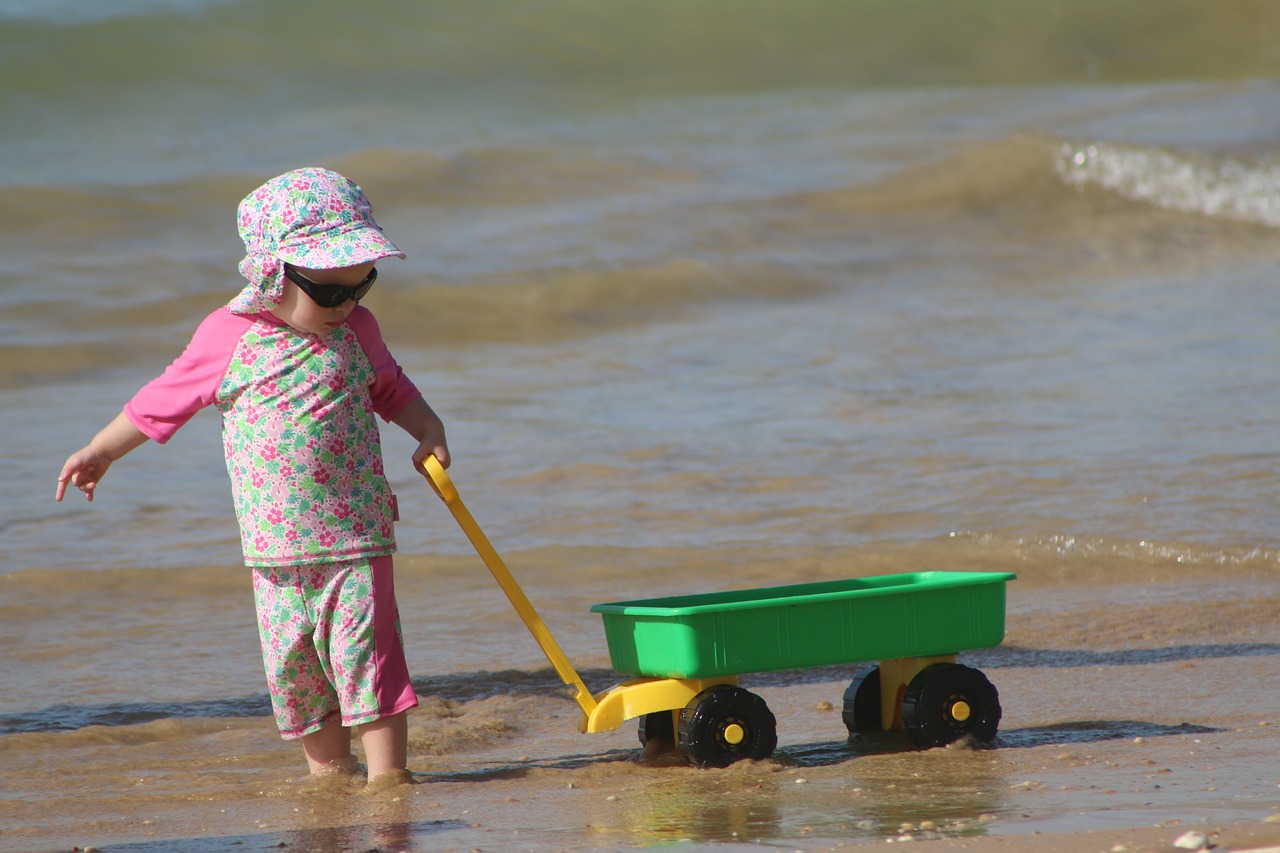By Rashaad Young
We know that fine and gross motor development are important skills, especially for little people in their early years of life. Motor skills can range from writing or playing with small blocks (fine motor skills), to jumping, walking backwards, or riding a bike (gross motor skills). A child who is typically developing may easily meet developmental milestones in the gross motor domain or they may even develop some motor skills earlier than expected. However, the development of these skills may look different for some children with disabilities, as their disability may impact their development.
Supporting motor development can help children grow in other areas such as social-emotional, communication, and cognitive development. The focus of this blog post is how early childhood practitioners can simultaneously enhance young children’s communication skills as they engage in gross motor activities. For example, teachers can promote preschoolers’ communication skills by providing them with opportunities to count or sign to 10 as they pass a ball back and forth with a peer or learn new vocabulary as they participate in an obstacle course in which they are encouraged to lunge, skip, go over and under things, and balance on one foot.
When working with young children it is important to focus on, or build from, the child’s areas of strength as they develop new skills. Imagine a child with a speech delay, Ami, who has strong motor skills but delayed communication skills. A teacher can support Ami’s communication skill development by using strategies that are embedded during fun, engaging, and inclusive motor activities.
When trying to increase communication skills within gross motor activities, a practitioner can attempt the following things to support a child with disabilities or delays:
- Arrange the Physical Environment – Arrange the environment in a way that encourages motor development and provides multiple opportunities for communication. For example, a teacher can limit the number of balloons available during a motor activity so that children have to engage with a peer to share or take turns. Likewise, lowering a basketball hoop so a child with cerebral palsy can reach it, pairing children with and without disabilities to encourage peer interaction, and having partners count the number of baskets made in a set amount of time can facilitate motor, communication, and social skill development while playing basketball!
- Model Motor Vocabulary – Practitioners can model specific language, signs, and gestures, related to motor activities to help students develop communication skills (i.e., if playing with a ball, model words such as kick, dribble, throw, roll, as well as the behavior, so children can pair the words with the actions).
- Ask Motor Related Questions – Ask students questions in one of three ways:
- Open-ended questions with no specific right answer (i.e., Why do we get tired after running?)
- Choice questions that allow a child to make a choice between 2 or more options (i.e., When racing, do we want to run fast or slow?)
- Tell me/show me questions (i.e., Show me how you roll a ball, tell me how you balance on one foot)
- Use Fill in the Blank Strategy – Pausing or delaying a response can encourage a child to communicate. For example, when singing a song that is familiar to the child, the practitioner can stop and pause at a specific point and wait for the child to say the next word or phrase (e.g., “The farmer in the…” “DELL!”)
- Reinforce and Prompt Children’s Communication – Positive reinforcement not only prompts communication, but also encourages its continued use.
- Child: “Green ball.” Teacher: “Yes, you have a small green ball.”
- If a child is reaching for or pointing toward a toy that is on a high shelf, a caregiver might say, “Do you want the truck?” and then wait 3-5 seconds for the child to communicate. The child might be encouraged to use sign language, or words to request the toy. The caregiver can then acknowledge and expand on the child’s request (i.e., Child: “Truck please.” Caregiver: “Here is the blue garbage truck.”)
Children with and without disabilities develop at different speeds. Early childhood practitioners and caregivers can use a child’s strengths and interests to support communication development while they engage in a variety of fun gross motor activities.
You can find links to helpful Tip Sheets and Resources from the Illinois Early Learning Project in this document.
Reference
Akamoglu, Y., Ostrosky, M. M., Cheung, W. C., Yang, H. W., Favazza, P. C., Stalega, M. V., & Aronson-Ensign, K. A. (2019). Move together, communicate together: Supporting preschoolers’ communication skills through physical activities. Early Childhood Education Journal. https://doi.org/10.1007/s10643-019-00957-1
Image from Pixabay.com, CC0













